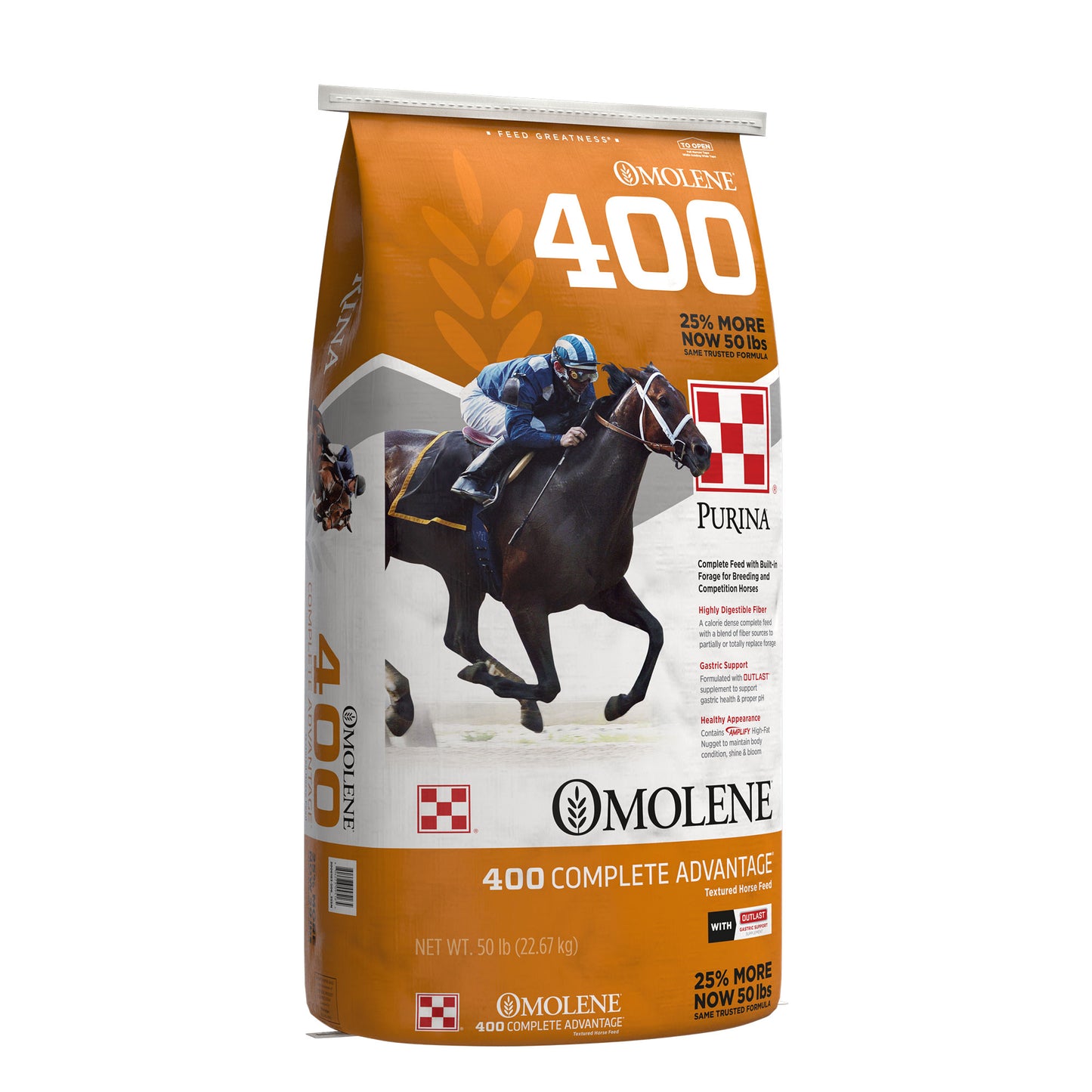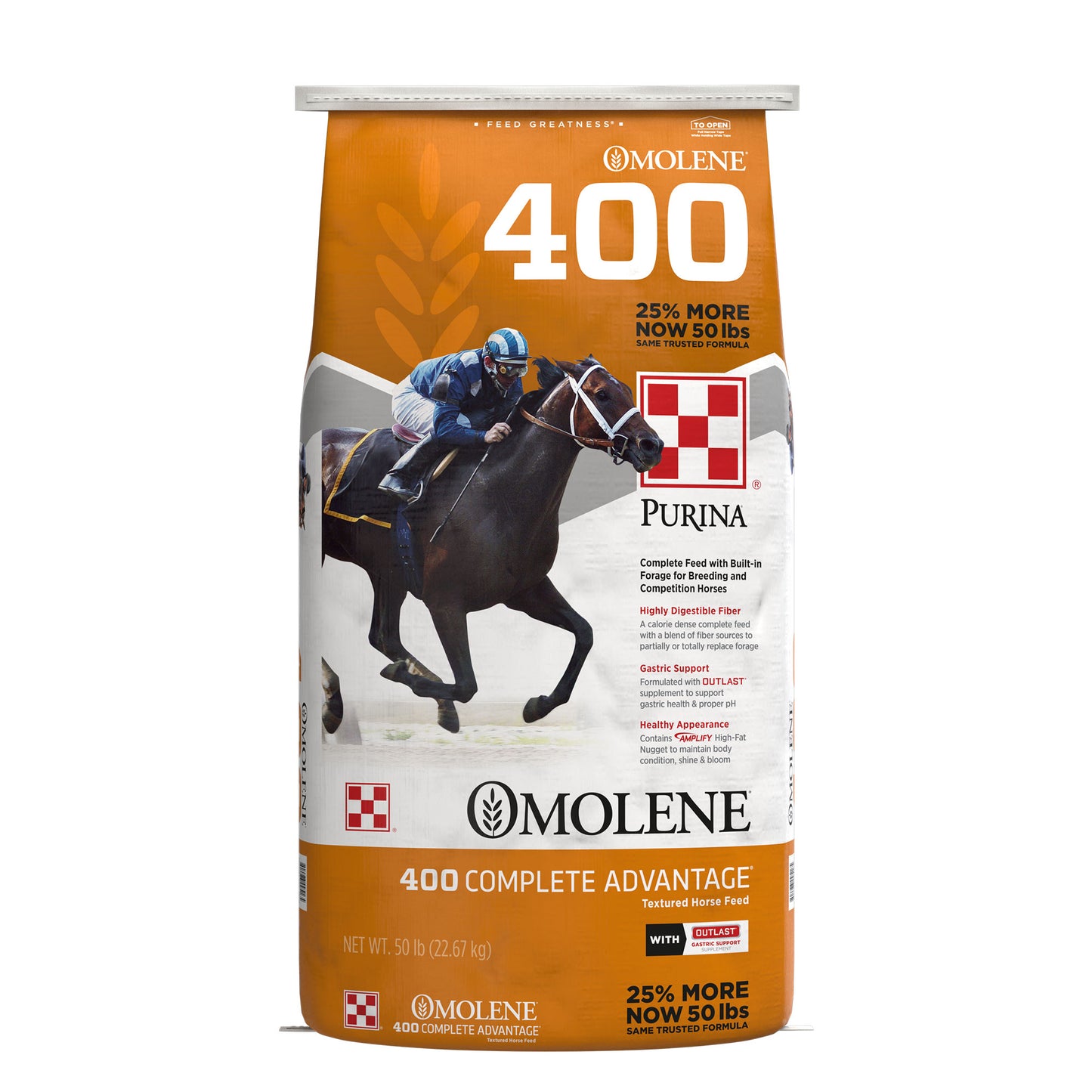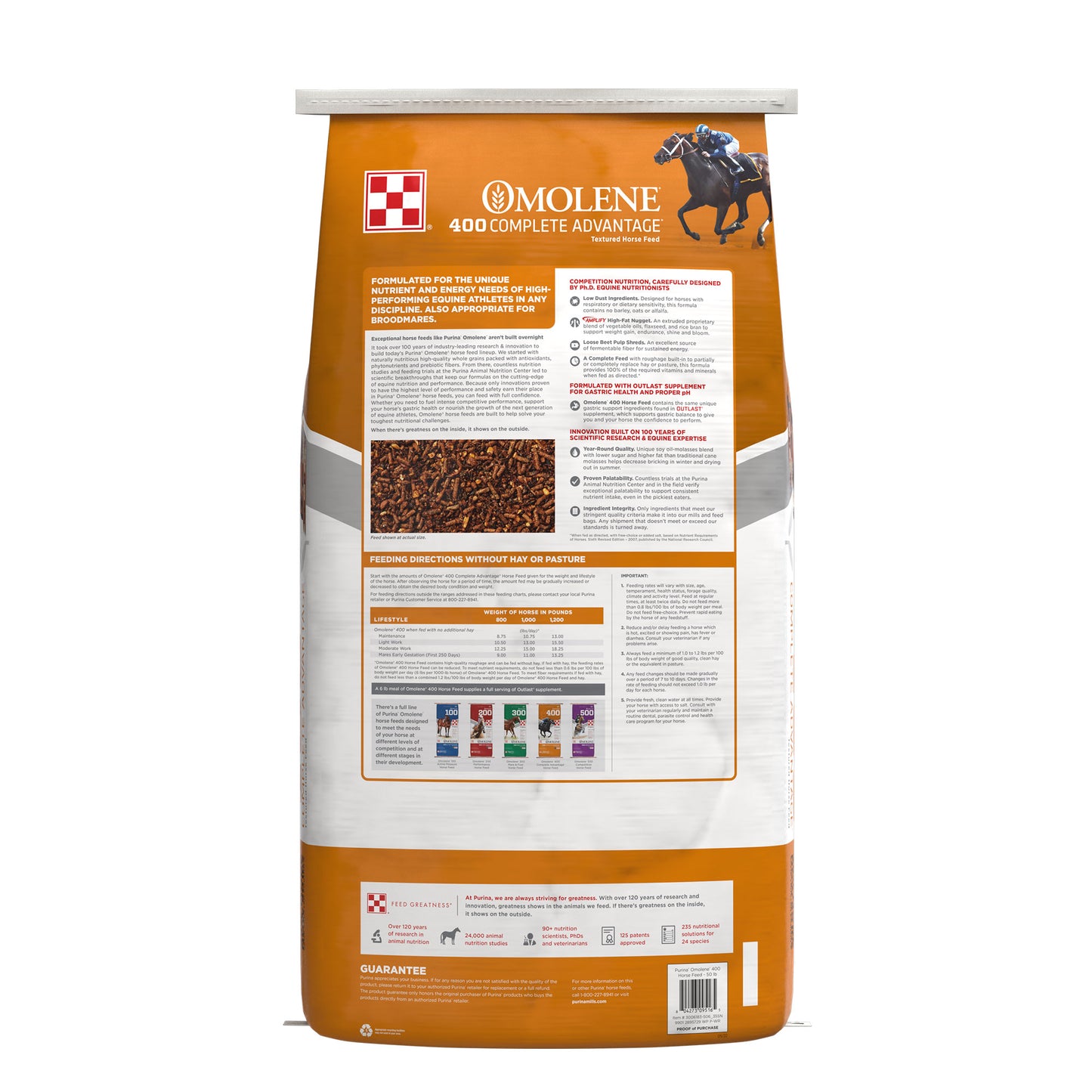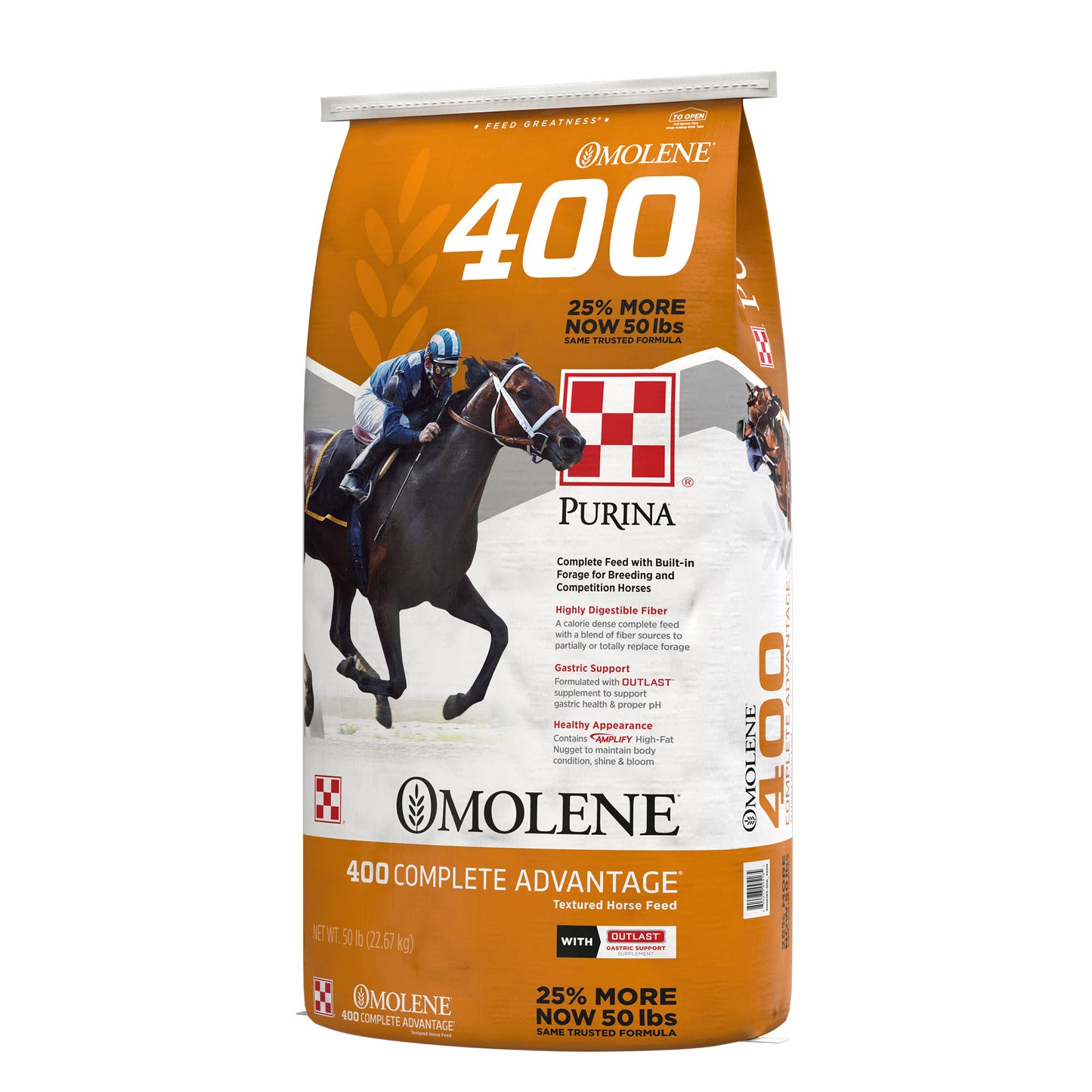



| Nutrient | Min / Max | Amount |
| Crude Protein | MIN | 12.00 % |
| Lysine | MIN | 0.50 % |
| Crude Fat | MIN | 5.50 % |
| Crude Fiber | MAX | 18.00% |
| Acid Detergent Fiber (ADF) | MAX | 21.00 % |
| Neutral Detergent Fiber (NDF) | MAX | 35.00 % |
| Calcium (Ca) | MIN | 0.80 % |
| Calcium (Ca) | MAX | 1.30 % |
| Phosphorus (P) | MIN | 0.40 % |
| Copper (Cu) | MIN | 35.00 PPM |
| Selenium (Se) | MIN | 0.30 PPM |
| Zinc (Zn) | MIN | 140 PPM |
| Vitamin A | MIN | 3000 IU/LB |
| Vitamin E | MIN | 100 IU/LB |
| Lifestyle | Weight of Horse in Pounds | ||
| 800 | 1,000 | 1,200 | |
| Omolene® 400 Horse Feed (lbs/day)* | |||
| Maintenance | 8.75 | 10.75 | 13.00 |
| Light Work | 10.50 | 13.00 | 15.50 |
| Moderate Work | 12.25 | 15.00 | 18.25 |
| Early Gestation (first 250 days) | 9.00 | 11.00 | 13.25 |
*Omolene® 400 contains high-quality roughage and can be fed without hay. If fed with hay, the feeding rates of Omolene® 400 can be reduced. To meet nutrient requirements, do not feed less than 0.6 lbs per 100 lbs of body weight per day (6 lbs per 1000-lb horse) of Omolene® 400. To meet fiber requirements, do not feed less than 1.2 lbs/100 lbs of body weight per day of Omolene® 400 and hay or pasture equivalent combined.
Changing To
- Make the feed change gradually over a period of 7 to 10 days.
- Mix the new feed with the old, gradually increasing the amount of the new feed while decreasing an equal amount of the old.
- Changes in the rate of feeding should not exceed 1 pound per day for each horse.
Caution
Store in a dry, well-ventilated area protected from rodents and insects. Do not feed moldy or insect-infested feed to animals as it may cause illness, performance loss or death.
Important
- Feeding rates will vary with size, age, temperament, health status, forage quality, climate and activity level. Feed at regular times, at least twice daily. When fed as a complete feed, a minimum of three meals per day is recommended. Do not feed more than 0.8 lbs/100 lbs (8 lbs per 1000-lb horse) of body weight per meal. Do not feed free-choice. Prevent rapid eating by the horse of any feedstuff.
- Reduce and/or delay feeding a horse which is hot, excited or showing pain, has fever or diarrhea. Consult your veterinarian if any problems arise.
- Any feed changes should be made gradually over a period of 7 to 10 days. Changes in the rate of feeding should not exceed 1.0 lb per day for each horse.
- Provide fresh, clean water at all times. Provide your horse with access to salt. Consult with your veterinarian regularly and maintain a routine dental, parasite control and health care program for your horse.
You May Also Like

For the widest selection of Purina products – along with personal service and know-how – check with your local retailer.






